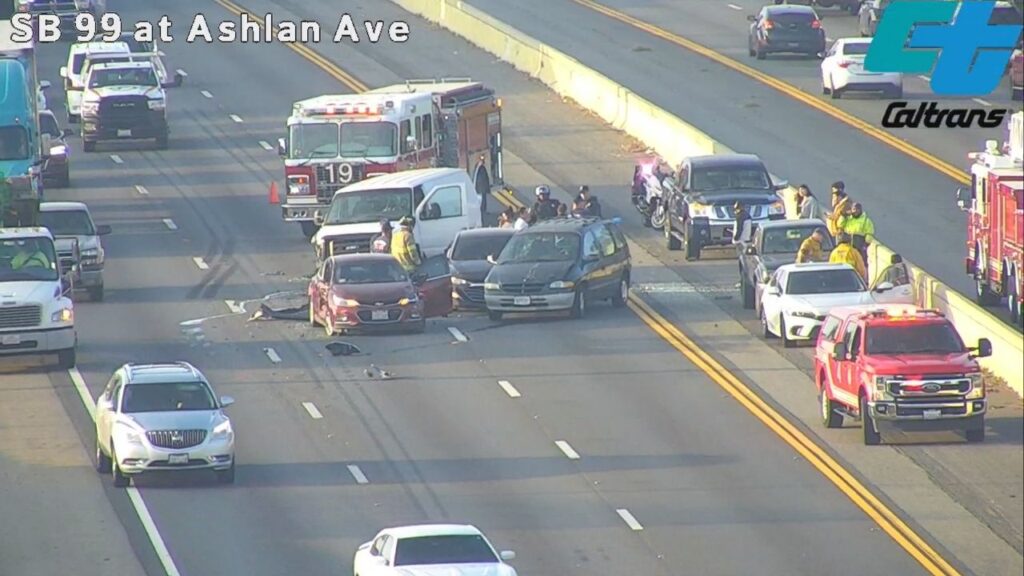
- A new bill by Assemblymember Buffy Wicks (D-Oakland) would exempt most urban housing developments from CEQA.
- The bill pits lawmakers who want to ease the housing crisis vs. those defending the state's landmark environmental law.
- “California will never achieve its housing goals as long as CEQA has the potential to turn housing development into something akin to urban warfare," states the Little Hoover Commission.
Share
|
Getting your Trinity Audio player ready...
|
This story was originally published by CalMatters. Sign up for their newsletters.
For years California has been stuck in a recurring fight between legislators who want the state to turbocharge new home construction and legislators determined to defend a landmark environmental protection law.
The final showdown in that long-standing battle may have just arrived.
A new bill by Oakland Democratic Assemblymember Buffy Wicks would exempt most urban housing developments from the 55-year-old California Environmental Quality Act.
If it passes — a big if, even in today’s ascendent pro-building political environment — it would mean no more environmental lawsuits over proposed apartment buildings, no more legislative debates over which projects should be favored with exemptions and no more use of the law by environmental justice advocates, construction unions and anti-development homeowners to wrest concessions from developers or delay them indefinitely.
In short, it would spell the end of California’s Housing-CEQA Wars.
“If we’re able to get it to the governor’s desk, I think it’s probably one of the most significant changes to CEQA we will have seen since the law’s inception,” said Wicks.
Wicks’ broadside at CEQA (pronounced “see-kwah”) is one of 22 housing bills that she and a bipartisan group of legislators are parading out Thursday as a unified “Fast Track Housing Package.” Wicks teed up the legislative blitz earlier this month when she released a report, based on the findings of the select committee she chaired last year, that identified slow, uncertain and costly regulatory approval processes as among the main culprits behind California’s housing crisis.
The nearly two dozen bills are a deregulatory barrage meant to blast away at every possible choke point in the housing approval pipeline.
Most are eye-glazingly deep in the weeds.
There are bills to standardize municipal forms and speed up big city application processes. One bill would assign state and regional regulatory agencies strict timelines to approve or reject projects and another would let developers hire outside reviewers if cities blow the deadlines. Different bills take aim at different institutions identified as obstructionist: the California Coastal Commission, investor-owned utilities and local governments throwing up roadblocks to the construction of duplexes.
Wicks’ bill stands out. It’s simple: No more environmental lawsuits for “infill” housing. It’s also likely to draw the most controversy.
“It’s trying something that legislators have not been willing to try in the past,” said Chris Elmendorf, a UC Davis law professor and frequent critic of CEQA. “And the reason they have not been willing to try in the past is because there are a constellation of interest groups that benefit from the status quo. The question now is whether those interest groups will kill this or there’s a change in the zeitgeist.”
A spokesperson for CEQA Works, a coalition of dozens of environmental, conservation, and preservation advocacy organizations, said the members of the group needed more time to review the new legislation before being interviewed for this story.
A spokesperson for the State Building and Construction Trades Council, which advocates on behalf of tens of thousands of unionized construction workers in California, said the organization was still “digging into” the details of the bill.
What’s the Big Deal?
The California Environmental Quality Act has been on the books since 1971, but its power as a potential check on development has ebbed and flowed with various court rulings and state legislative sessions. The act doesn’t ban or restrict anything outright. It requires government agencies to study the environmental impact of any decisions they make — including the approval of new housing — and to make those studies public.
In practice, these studies can take years to complete and can be challenged in court, sometimes repeatedly.
Defenders of how the law applies to new housing argue that CEQA lawsuits are, in fact, relatively rare. Critics counter that the mere threat of litigation is often enough to pare down or entirely dissuade potential development.
As state lawmakers have come around to the idea that the state’s shortage of homes is the main driver of California’s punishingly high cost of living — and a major political vulnerability for Democrats — CEQA has been a frequent target.
Until now, attacks on the law have generally come in the form of selective carve-outs, conditioned exemptions and narrow loopholes.
“If we’re able to get it to the governor’s desk, I think it’s probably one of the most significant changes to CEQA we will have seen since the law’s inception.”
Buffy Wicks, Assemblymember, Democrat, Oakland
There’s the law that lets apartment developers ignore the act — but only so long as they set aside some of the units at a discount and pay their workers union-level wages.
A spate of bills from two years ago waived the act for most homes, but only if they are reserved exclusively for low-income tenants.
There was the time a CEQA lawsuit held up a UC Berkeley student housing project over its presumptively noisy future tenants and the Legislature clapped back with a hyper-specific exemption.
Wicks’ new bill is different, in that the exemption is broad and comes with no strings attached. It would apply to any “infill” housing project, a general term for homes in already built-up urban areas, as opposed to fresh subdivisions on the suburban fringes.
That echoes a suggestion from the Little Hoover Commission, an independent state oversight agency, which made a series of “targeted reform” proposals to the environmental law last year.
“California will never achieve its housing goals as long as CEQA has the potential to turn housing development into something akin to urban warfare — contested block by block, building by building,” the report said. “The Commission recommends that the state exempt all infill housing from CEQA review— without additional conditions or qualifications.”
Wicks bill defines “infill” broadly as any housing in an urban area that’s either been previously developed or surrounded by developed lots and doesn’t sit on a wetland, a farm field, a hazardous waste site or a conservation area.
The site also has to be less than 20 acres to qualify for the exemption, but at roughly the size of 15 football fields, that’s not likely to be a limiting factor for most housing projects.
One possible rub: When a housing project varies from what is allowed under local zoning rules and requires special approval — a common requirement even for small housing projects — the exemption would not apply.
Enter another bill in the housing package, Senate Bill 607. Authored by San Francisco Democratic Sen. Scott Wiener, that bill would also exempt those rezonings from CEQA if the project is consistent with the city’s state-mandated housing plan.
“Put the two bills together and it’s really a dramatic raising of the ante in terms of what the pro-housing legislators are willing to put on the table and ask their colleagues to vote for,” said Elmendorf.
An Environmental Case Against the Environmental Quality Act?
Environmental justice advocates regularly use the law to block or extract changes from developments that they argue will negatively affect low-income communities. Developers and lawyers regularly claim that organized labor groups defend the law to preserve it as a hard-nosed labor negotiation tool. Well-to-do homeowners who oppose local development projects for any reason may turn to CEQA to stall a project that otherwise passes muster on paper.
All these groups have pull in the California capitol. That may be one reason why this kind of bill hasn’t been introduced in recent memory.
Wicks said she thinks California’s Legislature may be ready to take up the cause. The severity of the housing crisis, Democratic electoral losses over the issue of unaffordability, and the urgency to rebuild in the wake of the Los Angeles wildfires all have created a “moment” for this argument, she said.
She, and other supporters of the bill, also insist that the cause of the environment is on their side too.
“I don’t view building infill housing for our working class communities in need as on par with drilling more oil wells in our communities, yet CEQA is applied in the same way,” she said.
Researchers have found that packing more homes into already-dense urban areas is a good way to cut down carbon emissions. That’s because living closer to shops, schools, jobs and restaurants mean more walking and biking and less driving, and also because downtown apartments, which tend to be smaller, require less energy to heat and cool.
Even if infill is, in general, more ecologically friendly than sprawl development, that doesn’t mean that a particular project can’t produce a wide array of environmental harms. In a letter to the Little Hoover Commission, the California Environmental Justice Alliance, a nonprofit member of CEQA Works, highlighted the 2007 Miraflores Senior Housing project in Richmond.
A final environmental impact report for the project “added strategies to mitigate the poor air quality, water quality, and noise impacts” associated with the development and “included plans to preserve the historic character of buildings, added key sustainability strategies, and improved the process for site clean up.” That report was certified by the city in 2009.
Jennifer Hernandez, a land-use attorney and one of the state’s most prolific critics of CEQA, said local permit requirements and public nuisance rules should be up to the task of addressing those problems, no outside litigation required.
“The whole construct of using CEQA to allow the dissenting ‘no’ vote, a community member with resources, to hold up a project for five years is just ridiculous,” she said. “It’s like making the mere act of inhabiting a city for the people who live there a harm to the existing environment.”
This article was originally published on CalMatters and was republished under the Creative Commons Attribution-NonCommercial-NoDerivatives license.




















